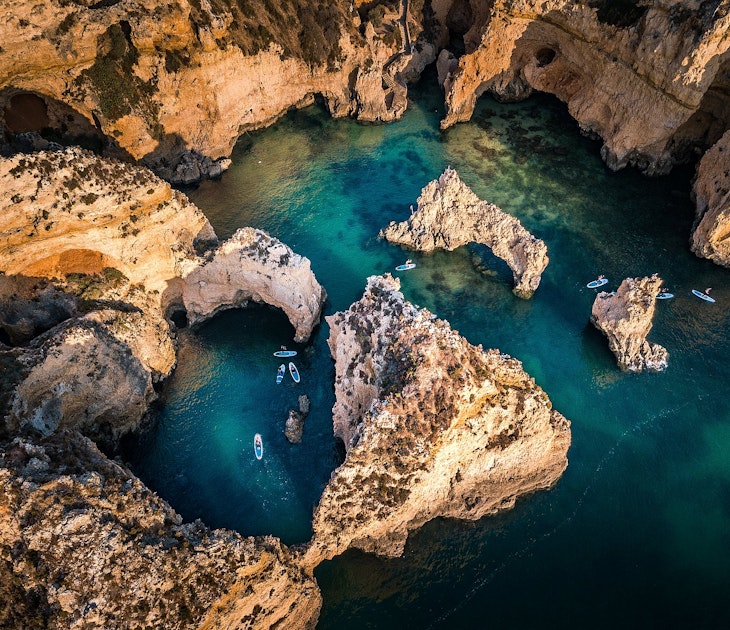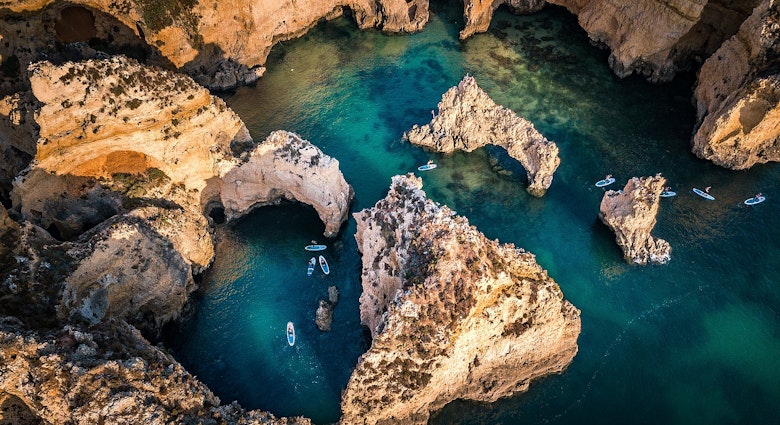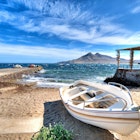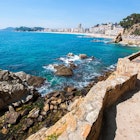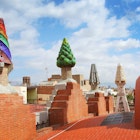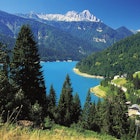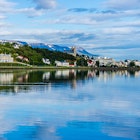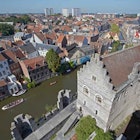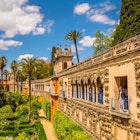Western Europe's major attractions are impressive but also draw huge crowds; the magic of exploring the big sights can be quickly lost amidst long queues and a sea of selfie sticks. Put the thrill back into exploring new places with our selection of alternatives to the major locations. You’ll also get the feel-good bonus of giving a boost to secondary economies and give overtouristed infrastructures the time to readjust and recover.

For medieval architecture and riverside culture try Ghent over Bruges, Belgium
Bruges is a doll-house in city form: ornate, compact and brimming with grandiose charm. But this can mean that the only local life you’re going to see is outside of the city walls. Less than an hour’s drive away, equally resplendent Ghent rejoices in its ancient history, but feeds its young soul.
Discover Ghent’s display of medieval bridges and spires all in an afternoon’s amble: begin at St Michael’s Church and end at magnificent St Bavo’s Cathedral. Struck by Bruges’ Belfry? Ghent boasts its own, which sees fewer crowds. Nearby, get your fill of fairy-tale buildings in the quiet cobbled streets of Patershol and Prinsenhof. And while boat trips on Bruges’ canals are a tight squeeze, in Ghent you can circumnavigate swathes of the river by kayak and get up close to the city’s centrepiece: the imposing Gravensteen Castle.
With Bruges opting for early closing hours, it’s after nightfall that Ghent comes into its own, thanks to the award-winning Light Plan initiative, with buildings and sculptures glittering over the still canals. And there are plenty of peppy bars to choose from, from the best riverside spot at Het Waterhuis aan de Bierkant to Dulle Griet, a cosy haunt serving up over 500 beers.

For history and student life try Leipzig over Berlin, Germany
Hailed as the ‘new Berlin’, Leipzig offers up world-class sights without the queues. Saxony’s rising star was an instrumental part of Germany’s reunification and, being home to one of the world’s oldest universities, the understated city is steeped in a rich history of music and philosophy. Leipzig University’s alumni include the likes of Goethe, Wagner and Nietzsche, proving that the city has been attracting esteemed visitors long before it became its hip new self. Berlin might have Museum Island, but Leipzig has a respected museum and gallery culture of its own; to name a few, you can discover the Bach Museum, the German Photography Museum and the Museum in der Runden Ecke, a well-informed glimpse into life at a former Secret Police station.
The street art in Leipzig might not be as prominent as in Berlin, but this can make for a far more rewarding experience than joining one of many tour groups. Particularly splashed on the walls of the Connewitz district, there are plenty of political messages in spray form and even a Banksy to find, and the soles of your feet will thank you given Leipzig is a fraction of Berlin’s size. The latter’s nightlife of grit and glitz might be renowned around the globe, but it’s easier to find your way in kleine Leipzig; whether it’s long-running techno haunt Distillery or kitschy live music venue celebrating all things ‘60s, Flowerpower, this is a city that proves it doesn’t take itself too seriously.

For lush city gardens and tapas try Seville over Barcelona, Spain
Few would deny Barcelona’s pull, but it can be hard not to feel cramped and uninspired when you’re waiting for your Instagram shot atop Park Güell or queueing for an afternoon at La Sagrada Família. Though worthy of the attention, they generate the perspiring, impatient traveller in all of us; instead take the option of a slower pace in enchanting Seville. This Spanish city boasts Roman ruins, intricate Moorish towers and an innate energy. Lose yourself in the architecture and lush grounds of Unesco site Alcazar of Seville, recognised as the backdrop for sun-kissed Dorne in Game of Thrones. Idle away your time at Mediterranean utopia, Parque de Maria Luisa, with its colourful tiled fountains and shady avenues.
When it comes to dinner, finding the most authentic Spanish dishes doesn’t require leaving the centre of Seville. Grab a spot on a tapas tour, and head to Seville’s sensual and lively neighbourhood, Triana, ideal for tapas-hopping and flamenco dancing into the wee hours.
The capital of Andalucía is also a great base for exploring the luscious sites of the wider region. Soak up nearby Córdoba’s Arab baths and Moorish hammams, or lose yourself in Spain’s – somewhat surreal – own wild west country, El Rocío, a town built on desert sands where it isn’t rare to see locals travelling by horse and cart.

For surf and seafood try Ericeira over Algarve, Portugal
When legions of families, surf-lovers and long-term vacationers are besotted with the Algarve, it’s hard not to picture crowds when you dream up long Portuguese summers. Instead, consider sleepy yet spectacular Ericeira. Just 50km from Lisbon, the fishing town sits pretty atop Atlantic-facing cliffs, and succeeds in being world-class for its two main offerings; waves and delicious seafood. Beloved by locals, as evident in its rows of well-maintained heritage whitewashed buildings, it’s also popular with holidaymakers from Lisbon because of its more affordable prices.
Every year the Algarve enjoys an international, busy surf season. But with more than 30 spots fit for unrivalled surf, in Ericeira you can expect to have intimate surf lesson groups and a whole swathe of a beach to yourself. Locals take to the waves here daily, and there are renowned surf schools such as Surf Camp Ericeira, which also provides one of the best surf hostels and retreats. And to the north of the town, the Ericeira World Surfing Reserve is Europe's only surfing reserve.
Spend the rest of your time visiting relaxed lounge bars and boho surf shops. For no-frills traditional seafood dishes, head to Mar à Vista, a local favourite. The coastline in and around the town sees cooler temperatures than the Algarve, ideal for hiking and cycling.

For romantic backdrops and artistic treasures try Padua over Venice, Italy
It’s no secret that Venice is overflowing with tourists: various restrictions have been imposed on travellers to the City of Bridges, but it still sees tens of million of visitors each year. Instead of summering in Venice, turn your attention to a small city just 40km away: Padua.
With its array of delicate churches and famed locals – from Galileo to Donatello and Giotto – Padua’s walled city doesn’t attempt to rival Venice. Instead it possesses its own laid back Italian glamour in ornate gardens and picturesque bridges. Often overlooked, Padua is one of Northern Italy’s most ancient cities. You’ll be surprised at the grandeur that Venice's little neighbour has to offer, from Giotto’s stunning blue fresco masterpiece inside the somewhat bland exterior of the Cappella degli Scrovegni, to the array of flora in the 16th-century Unesco-protected botanical gardens Orto Botanico, and in the curving expanse of meticulous Prato Della Valle, Europe’s largest square. And if the idea of sharing a romantic dinner spot with dozens of others isn’t ideal, Padua’s dining scene makes for a more intimate date night. Find a spot at ancient, candle-lit Da Nane della Giulia or share some creamy artisan gelato at Gelateria Artigianale da Bruno.
